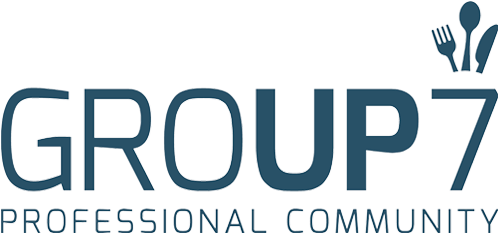In our article “7 Smart Ways to Break the Friction Between Sales and Marketing,” we emphasized the importance of good collaboration between sales and marketing, along with clever tips to get started. Now, we would like to share insights from our practical experiences.
In our daily work, we’ve gathered numerous examples in this area. Examples of what works well, but also what doesn’t work. The ultimate practical example where sales and marketing can greatly reinforce each other is the preparation and execution of a lead generation campaign. The prime example of how collaboration can serve a higher purpose and where working together can lead to better results.
Imagine you’re working for a (brand) manufacturer. The R&D department has developed a new product for a specific application in the professional kitchen. To introduce this new product to the market, you’re going to develop and execute a digital lead generation campaign. Here are the steps sales and marketing can jointly take for this:
1. One Goal in Mind Together
determine the key objectives together.
Discuss the business objectives of this introduction together: what targets need to be achieved and by when? Translate this into the shorter term: what KPIs do you need to achieve with this initial campaign and what is required for that? Specifically, this means: how many customers does sales need to acquire, how many leads does marketing need to provide for this?
From both disciplines, assess what is realistic, calculate it together, so the pressure is evenly distributed, and both teams are convinced that the set goals are achievable.
2. Talk about it
Communicate regularly with each other, both before and during the campaign.
Once you’ve jointly determined your objectives, the real work begins. Discuss together to determine the key features of the campaign. Work together to address some basic questions:
- What do you want to achieve with the campaign (for example, awareness, consideration, or conversion of your introduction)?
- When is the campaign successful?
- Which persona(s) will you target, and what are the 3 most important pain points or benefits you will address with this introduction? What will be the message you’ll use for this?
- How many leads (MQLs and SQLs) do you want to generate?
Using the answers to these questions as a starting point, you can brainstorm together to determine what content you want to offer your target audience at each stage of their customer journey. What trigger will make them aware of their problem/need? What will you offer to explain your solution?
And what will you offer to encourage a (trial) purchase?
With these jointly agreed-upon frameworks, marketing can detail the resources. Of course, the final content will also be reviewed by sales before it is finalized.
3. Plan Together
Plan the campaign together
A campaign needs to be well-planned in advance. Unfortunately, there are examples where marketing was surprised by the fact that a large part of the sales team was off during an important campaign. Then you have warm leads that cannot be followed up quickly!
So, schedule time to plan the campaign in detail. When does the first lead generation start, and when should sales be available to follow up on leads quickly? Also, make sure the entire sales team is aware of this and keeps their schedules free during the most relevant period for them.
4. Share and Analyze Data
Data is there to be shared with each other!
The most obvious good example is to use a CRM system that is accessible to both teams. Keeping this system up-to-date should also be a joint effort. After all, a richer and more detailed customer profile and lead information are relevant to both teams. For the sales team, so that salespeople are better prepared when approaching potential customers. For the marketing team, to analyze the behavior of contacts and to see the follow-up of the provided leads.
During a campaign, having regular meetings to share key findings is essential. Schedule a fixed weekly meeting with both teams on time. Here you share the key results & successes, the possible barriers, and options for adjustment. By listening well to each other, you will find that you learn a lot from each other. This will also increase mutual understanding.
5. Assess Leads and Evaluate Campaigns Together
Evaluate your leads and campaigns together, not separately.
This topic has partially been addressed in tip 4.
However, during a campaign, it is also important for marketing to assess the collected leads more in detail together with sales. You want to find out why these leads are good or not good and what needs to be adjusted to improve the quality. If your brand is also available in retail, there is a chance that consumers will respond to your campaign on social media. This means that you need to pay more attention to your visuals and text to address the professional target audience.
After the campaigns, take the time to jointly review the results to learn together what worked and what didn’t. Of course, you then jointly review the objectives and the reasons behind the results.
Another pleasant method for an end evaluation is to look ahead to the next campaign, for which you jointly fill in the following three topics: what to start, what to adapt, and what to stop. Preferably, do the last exercise with a broad team to gather input from as many colleagues as possible.
6. Learn and Grow Together
A joint approach improves overall collaboration
Good cooperation between both disciplines naturally does not stop at the points mentioned above. As a marketer, during the follow-up of the campaign, spend at least one day together with sales visiting a number of leads. You see directly in practice how a potential customer reacts and how the planned approach works. In addition, you can also ask questions yourself, both to the prospects and to your sales colleague. You are extra involved and you learn from each other. An additional benefit is that sales feels better heard and also feels partly responsible for the output of this and possibly even a next campaign.
7. Joint Rewards
Reward both disciplines with a joint outing upon reaching the objectives.
Nothing is more enjoyable than celebrating the achievement of a joint goal together. Within GROUP7, we like to celebrate our successes together anyway; sharing positive messages, no matter how small, is motivating for everyone!
Therefore, in joint consultation, consider a team outing that will be organized upon reaching the joint objectives. Consider, for example, a dinner or a fun activity.
First and foremost, this increases the motivation to achieve the objectives. In addition, a social activity is a good way to connect people (in this case from different departments) with each other.
Recognizable?
The above examples are just a selection from the experiences we have gained over the years. We are very curious how recognizable the examples mentioned are for you, but of course also what challenges you encounter within your organization.
Feel free to contact us; we are happy to help you achieve structural success through good cooperation between sales and marketing!


